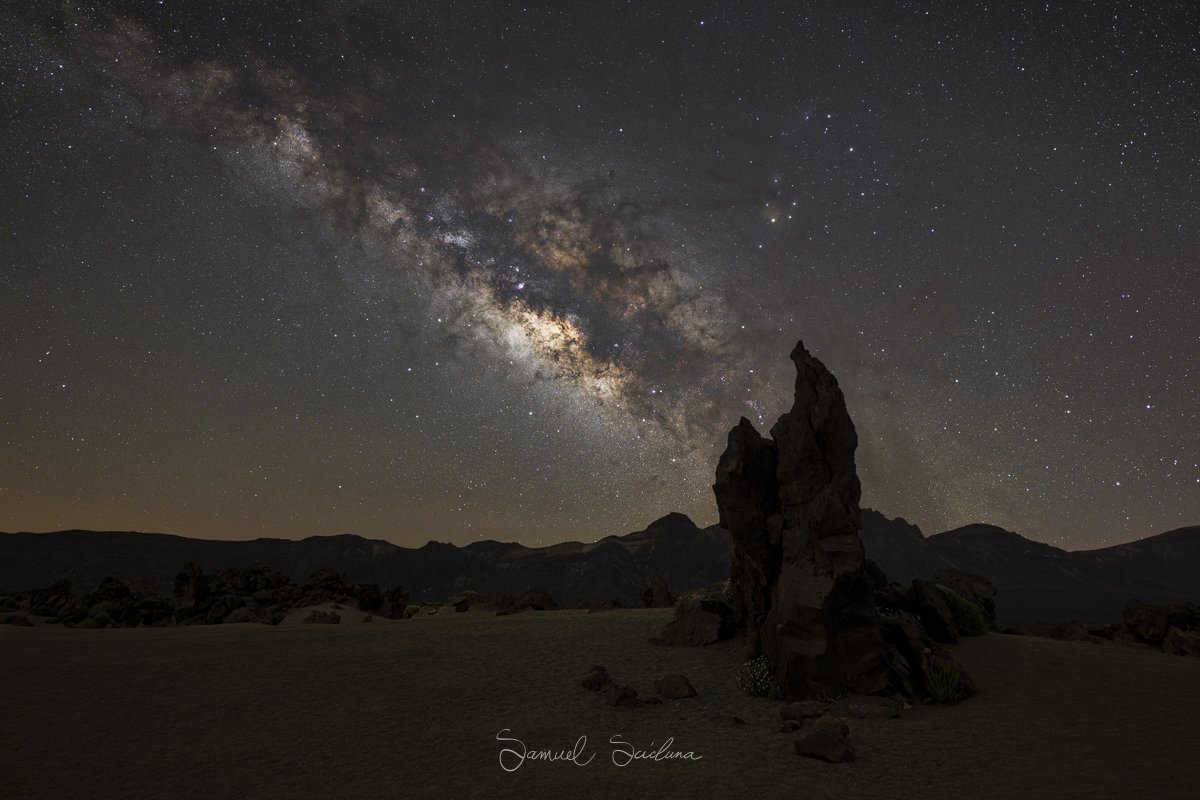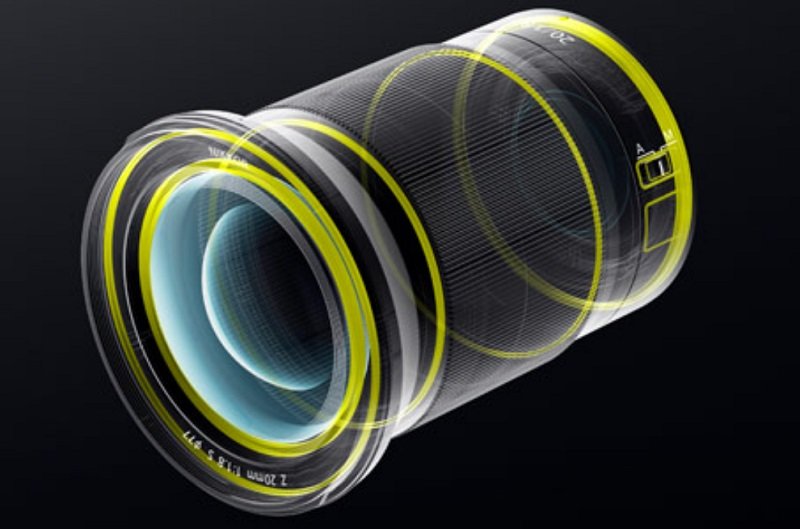The Nikon Z 20mm f/1.8 S is a professional ultra-wide-angle lens designed for capturing architecture, landscapes, and portraits. I did not buy this lens for any of the above reasons, I bought it solely for capturing the night sky, more specifically, the Milkyway.
The Nikon Z 20mm f/1.8 S includes an advanced optical formula comprised of 14 elements and Nikon’s top-of-the-line coatings. The Nikkor Z 20mm f/1.8 S produces sharp, high-quality images on Nikon’s Z-mount mirrorless cameras. As an “S-Line” line, it is considered a professional quality lens and is weather-sealed.
I bought my Nikon Z 20mm f/1.8 S for 1097 Euro, this is not cheap, especially when compared to the price of some of the older F-Mount Nikon lenses. Having used both the Samyang (Rokinon in the US) 20mm F1.8 and Samyang 24mm F1.4 lenses, the biggest concern that I had was around coma, aberrations and sharpness at the corners, which are areas most wide angle prime lenses suffer from.
Specifications:
Focal Length & Angle of View: 20mm FX, (30mm DX) 94°
Apertures: F1.8 to - F16
Stabilization: No
Autofocus: Multi-focus system, twin stepper motor,
Manual Focus: Yes, electronic, no focus distance scale
Optics: 14 Elements in 11 groups, 3 aspherical, 3 Extra-Low Dispersion, Nano Crystal Coat, Super Integrated Coating
Construction: Metal, High-quality plastic
Magnification and Focus Distance: 20cm (0.19x, 7.87″)
Filter Thread: 77mm
Size: 84.5 x 108.5mm (3.33 x 4.27 in)
Weight: 505g (1.11 lb)
Price: €1097
Sky: Tracked for 4 minutes at F2.5 ISO 400 / Foreground: 4 minutes at F4 and ISO 800.
Technologies
Stepping Motor
NIKKOR Z lenses use a stepping motor for fast, accurate, smooth, quiet autofocus with reduced wobbling. This quiet drive system makes the lenses ideal for use when shooting video.
Electromagnetic Diaphragm Mechanism
An electromagnetic diaphragm mechanism in the lens barrel provides highly accurate electronic diaphragm or aperture blade control when using auto exposure during continuous shooting.
ED (Extra-Low Dispersion) Glass
An optical glass developed by Nikon that is used with normal optical glass in telephoto lenses to obtain optimum correction of chromatic aberrations.
Nano Crystal Coat
An anti-reflective coating developed by Nikon that virtually eliminates internal lens element reflections across a wide range of wavelengths. Nano Crystal Coat solves ghost effects caused by red light and effectively reduces ghost and flare caused by light entering the lens diagonally.
The internal arrangement of the elements of the Nikon Z 20mm F1.8
Aspherical Lens
A lens with a curved, non-spherical surface. Used to reduce aberrations and enable a more compact lens size. Aspherical lenses minimize coma and other types of lens aberrations, even when used at the widest aperture. They are particularly useful in correcting distortion in wide-angle lenses and help contribute to a lighter, more compact design by reducing the number of standard (spherical) elements necessary. Aspherical lens elements correct these distortions by continuously changing the refractive index from the center of the lens.
IF Lens
A NIKKOR lens in which only the internal lens group shifts during focusing. Thus, IF NIKKORS do not change in size during AF operation, allowing for compact, lightweight lenses capable of closer focusing distances. These lenses will be designated with the abbreviation IF on the lens barrel.
Super Integrated Coating
Nikon Super Integrated Coating is Nikon's term for its multilayer coating of the optical elements in NIKKOR lenses.
A 24 image panorama using the Nikon 20mm F1.8 (12 Tracked images for the sky and 12 images for the foreground).
Ergonomics and Build Quality
As with all other Nikon Z S-line lenses, the Z 20mm f/1.8 S is built to last and oozes quality. The Nikkor Z 20mm f/1.8 S has a tough plastic shell, a large and easy to rotate focus ring, and as mentioned previously is fully weather-sealed, so you can expect the lens to last for along time.
The Nikon Z 20mm f/1.8 S has a rubber gasket on the mount to prevent dust and other debris from getting into the lens and onto the camera sensor. On top of that, the lens is fully sealed in a number of different areas in order to keep dust and moisture out. Having spent 8 nights in Tenerife shooting in what can only be considered as a high desert, with very fine dust and sand, I can confirm that the weather sealing works great, without any visible dust geting into the lens, even though I changed lenses multiple times per night.
The Nikon Z 20mm f/1.8 S has a 77mm filter thread, This was perfect for attaching my ‘Focus on Stars’ filter, which I use to obtain perfect focus when shooting the night sky.
The The Nikon Z 20mm f/1.8 S weighs in at just 505grams. Considering the number of elements in the lens, the size of the maximum aperture and the build quality, it is really impressive that Nikon have managed to keep the weight so low.
The front element is relatively small and easy to keep clean with just a rocket blower (Dust particles) or a lens cleaning wipe for smudges / finger prints.
Image Credit: Nikon
Sharpness and Contrast
As we have come to expect from all Nikkor Z-mount lens, Nikon has done an incredible job of making each lens perform at the highest levels optically, including sharpness and contrast. The Nikon Z 20mm f/1.8 S is not an exception to this trend and delivers fantastic overall performance.
I don’t like to rely on sharpness tests and MTF Charts, I prefer to take sample photos of the stars and base my decision for the optical quality of a lens from tangible results and my own images.
Putting it simply, the sharpness of the Nikon Z 20mm f/1.8 S is superb, especially in the centre of the frame and even at the widest aperture of F1.8.
This is an incredible achievement from Nikon, my Samyang 24mm F1.4 and Samyang 20mm F1.8 F-Mount lenses can’t achieve this sharpness when stopped down to F5.6, so this is truly impressive!
As with all lenses, stopping down increase sharpness further. At F/2.8, the lens is significantly sharper in the center, by F4 the corners are as sharp as can be and this is the sweet spot for the lens, especially when tracking.
As expected from all modern Nikon Z prime lenses, the Z 20mm f/1.8 S has superb contrast and color output.
A 50% crop of the centre of an image.
Vignetting
As with all ultra fast lenses, the Nikon Z 20mm f/1.8 S does have some vignetting when shot wide open, but this is nothing that can’t be fixed with the simple click of a button by using the appropriate Lens Profile Correction in post processing. Stopping down to F2.8 gets rid of pretty much all vignetting.
Distortion
Whilst there is definitely some lens distortion (As expected from any ultra-wide angle lens), as with vignetting, this is nothing that a profile correction can’t fix in post processing.
Chromatic Aberration
Chromatic aberration is controlled very well and there is a clear improvement compared to Nikon’s previous version of this lens (F-Mount).
A 20 image panorama using the Nikon 20mm F1.8 (10 Tracked images for the sky and 10 images for the foreground).
Coma
The single biggest concern with choosing a lens for Astrophotography is coma. Come is a star killer and can completely destory an otherwise perfect image. Most ultra-wide angle lenses show field curvature and astigmatism, this distorts and stretches anything in the corner of the frame. This is not a significant concern when shooting Landscapes, Architecture of portraits, but it is a concern when shooting the night sky as come can distort stars into weird shapes like diamonds, crosses, butterflies or just artificially bloat stars. I’m glad to say that the Nikon Z 20mm f/1.8 S handles coma better than any of the other lenses I have tested and owned, including the much more expensive Nikon Nikkor 14-24mm F2.8 Lens.
100% Crop of the bottom Left corner
100% Crop of the bottom Right corner
100% Crop of the top Left corner
100% Crop of the top Right corner
Image Quality
I have tested the Nikon Z 20mm f/1.8 S with both the 45-megapixel Nikon Z7 II and Nikon Z8, the image quality is excellent on both. The images are sharp, contrasty and color rendition is very accurate with no obvious tints or casts.
Sky: Tracked for 2 minutes at F2.8 ISO 800 / Foreground: 4 minutes at F4 and ISO 800.
Summary
After switching to the Nikon mirrorless system, I eagerly awaited the release of the Nikon Z 20mm f/1.8 S lens. I loved the 20mm Focal length for shooting the Milkyway, both for single shots and for panoramas.
It was worth the wait, Nikon has done a fantastic job and created an incredible piece of glass. It blows similar third party lenses out of the water and is also a significant improvement on its predecessor.
The Nikon Z 20mm f/1.8 S is sharp, has minimal distortion and most importantly for astrophotography, is significantly better at handling coma, something which alternative options struggle to do so well.
The Nikon Z 20mm f/1.8 S is well built and should last a long time if taken care of due to its weather sealing and the use of quality components in its construction. If you are looking for your next lens for Astrophotography, then I would recommend this lens without hesitation. Whether you stack multiple single shots or track the Milkyway using a Star Tracker, this lens is a great addition to any Nikon Shooter’s arsenal!












